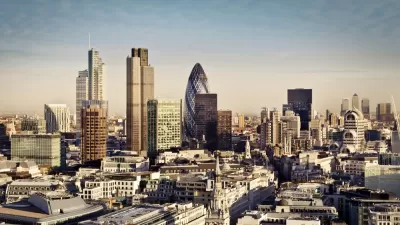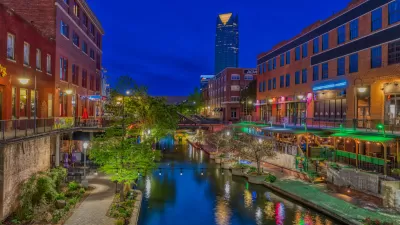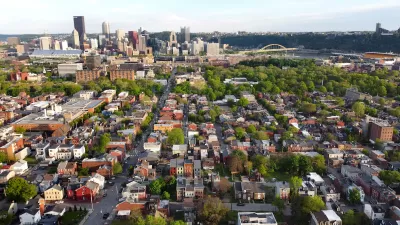An essay identifies imperatives for a new theory of tall, dense construction, and begins to sketch out a theory that will reconcile the skyscraper with contemporary business ideals.

Diana Lind's essay from the book The Future of the Skyscraper is available in full on Medium. Lind joins a distinguished group of writers in that book, with an essay that tests "the idea of building tall against the more sprawling needs of new industries."
Lind launches the essay's argument by citing the emblematic design of Facebook's headquarters, an adaptive reuse of the suburban office park once used by Sun Microsystems. The campus, argues Lind, embodies the tenants of New Urbanism, which is not necessarily a good thing. "This kind of deceptive architecture, devoid of theory but heavy on fantasy, has become not just the norm but a vogue of our times," writes Lind. "While contemporary aesthetics may profess to aspire to authenticity, the real and the sincere are often confused today with a fetishization of the past."
Moreover: "At a time of increasing resource scarcity and environmental stress, we should be shunning office parks like that of Facebook’s, built a ninety-minute car commute from the urban core where most of its employees live. With population growth and rising rents showing no sign of abating, low-density, New Urbanist designs simply cannot accommodate the demand of more than seven billion people on the planet."
The question posed by the essay is how to reconcile the skyscraper, assuming it brings economic, social, and environmental benefits, with the aesthetics of contemporary business. Some of that potential for reconciliation, according to Lind, acknowledges the shortfalls of how skyscrapers have been built in New York and other cities. Lind even agrees with the teachings of New Urbanism on the common skyscraper's negative effect on the human experience of the street.
To start the skyscraper on a path to rebirth, Lind suggests a surprisingly obvious concept: style. According to Lind, "[i]t is imperative that a new theory for skyscrapers be developed, one that will accommodate our culture’s values."
Read through the article for more on what that theory looks like.
FULL STORY: The Form Could Be Reborn

Alabama: Trump Terminates Settlements for Black Communities Harmed By Raw Sewage
Trump deemed the landmark civil rights agreement “illegal DEI and environmental justice policy.”

Planetizen Federal Action Tracker
A weekly monitor of how Trump’s orders and actions are impacting planners and planning in America.

The 120 Year Old Tiny Home Villages That Sheltered San Francisco’s Earthquake Refugees
More than a century ago, San Francisco mobilized to house thousands of residents displaced by the 1906 earthquake. Could their strategy offer a model for the present?

In Both Crashes and Crime, Public Transportation is Far Safer than Driving
Contrary to popular assumptions, public transportation has far lower crash and crime rates than automobile travel. For safer communities, improve and encourage transit travel.

Report: Zoning Reforms Should Complement Nashville’s Ambitious Transit Plan
Without reform, restrictive zoning codes will limit the impact of the city’s planned transit expansion and could exclude some of the residents who depend on transit the most.

Judge Orders Release of Frozen IRA, IIJA Funding
The decision is a victory for environmental groups who charged that freezing funds for critical infrastructure and disaster response programs caused “real and irreparable harm” to communities.
Urban Design for Planners 1: Software Tools
This six-course series explores essential urban design concepts using open source software and equips planners with the tools they need to participate fully in the urban design process.
Planning for Universal Design
Learn the tools for implementing Universal Design in planning regulations.
Clanton & Associates, Inc.
Jessamine County Fiscal Court
Institute for Housing and Urban Development Studies (IHS)
City of Grandview
Harvard GSD Executive Education
Toledo-Lucas County Plan Commissions
Salt Lake City
NYU Wagner Graduate School of Public Service





























